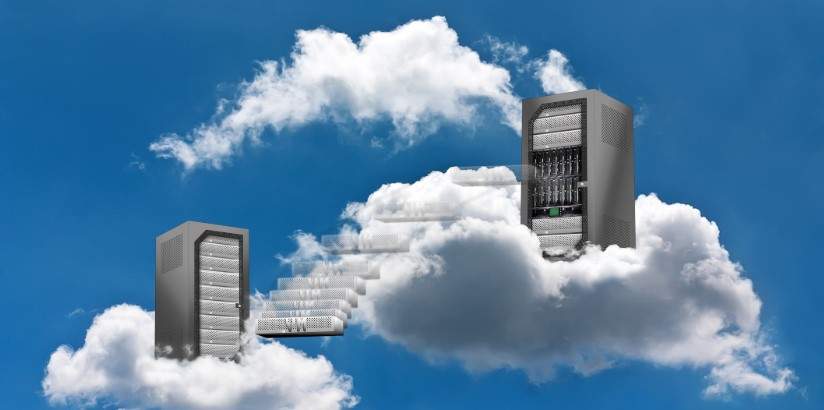The topics related to cloud computing are relevant to small businesses and global enterprises. These concepts cover various online areas nowadays.
If you are thinking about switching to any cloud service, it is crucial to understand the key differences, advantages, and possible drawbacks of the popular types of cloud technologies. This post covers all these aspects of three main cloud models: SaaS, IaaS, and PaaS.

Before you decide to leverage any cloud technology, you should understand how and where your data will be stored. The cloud allows software platforms to work online. As the data is stored across different servers remotely, the software can be accessed via multiple devices from any place.
There are 3 typically compared models of cloud service:
- Software as a Service (SaaS)
- Infrastructure as a Service (IaaS)
- Platform as a Service (PaaS)
Each model has its peculiarities, and you have to consider them before you can pick and implement the most appropriate cloud product for your business. Global organizations and startups should understand the differences between SaaS, IaaS, and PaaS to know what to choose and how to utilize them for their business processes better.
These models describe the way you can use the cloud for your business:
- SaaS means software that is available over the Internet and via a third-party service provider.
- IaaS is a cloud-based service that performs in accordance with the pay-as-you-go model for networking, virtualization, and storage.
- PaaS represents hardware or software tools available over the Internet.
In order to understand why cloud computing is so popular today, it is worth listing the benefits that SaaS, IaaS, and PaaS provide:
- Availability. You can access cloud services as soon as you start paying fees. There is no need to install and configure hardware.
- Cost-effectiveness. Cloud computing reduces hardware expenses because the hardware is provided by the vendor.
- Scalability. Cloud services look perfect for handling peak loads. Companies can leverage whatever computing resources they need if they use SaaS, PaaS, or IaaS products.
- High security. Cloud infrastructure is kept safe in protected data centers to ensure the maximum security of clients’ information.
- Performance. SaaS, IaaS, and PaaS are all about efficient computing infrastructure. They guarantee low network latency for the apps.
Let’s go into detail to understand all the points in the SaaS vs PaaS vs IaaS opposition.
Contents
SaaS: Special Aspects of the Model 
In the world of software development, Software as a Service is known as the most popular option for businesses in the cloud market. SaaS uses the Internet to deliver apps that are managed by a third-party vendor.
You can run the majority of SaaS solutions directly through your browser. It means that these solutions don’t require installations or downloads on the customer’s side.
SaaS solutions are typically used for:
- Personal goals. Many individuals use email services such as Gmail, cloud storage services such as Dropbox, file management services such as Google Docs, etc. You might not even realize how many cloud solutions around are actually SaaS services.
- Business goals. SaaS products are also used by companies of different sizes and industries: corporate email services, collaboration tools, CRM software, event management software, resource planning software, and so on.
SaaS advantages
Software-as-a-Service solutions propose the following perks for businesses users:
- Lower costs
- Simple adoption
- Access to applications from anywhere
- Possibility to work with them from any device
- Automatic software updates
- Reducing the time and money spent on tedious tasks
IaaS: Special Aspects of the Model 
Infrastructure as a Service is the most straightforward cloud model because it covers mostly the same services regardless of the chosen vendor.
In simple words, this is where a third party provides highly automated and scalable infrastructure (compute, hosting, storage, networking, etc.) in their global data centers and charges fees only for what you use.
IaaS services are aimed to help you in many cases and provide hardware infrastructure that you can use in a variety of situations (unlike SaaS and PaaS).
Infrastructure-as-a-Service seems most advantageous for startups and small companies that want to avoid spending time and money on purchasing and creating hardware and software. Such intelligent solutions can be used for website or application hosting, virtual data centers, or data analysis.
IaaS advantages
IaaS products have the following pros for businesses:
- The highest flexibility among all cloud computing models
- No expenses on hardware infrastructure
- Perfect scalability
- Advanced security and reliability
- Complete control of the infrastructure (for customers)
PaaS: Special Aspects of the Model 
Platform as a Service seems to be the most sophisticated of the three cloud models. Its main idea is to provide all of the IaaS basics together with the tools required to develop and deploy great applications—quickly and securely.
PaaS solutions provide cloud software components that are used mainly to create customized apps. It’s often about database management, middleware, operating system, and analytics.
Businesses utilize PaaS services mostly for software developers’ needs. Such solutions provide a excellent environment for developing, testing, and managing apps.
Platform-as-a-Service products give developers everything they need to create and deploy their software masterpieces without having to do any provisioning of the underlying infrastructure. The vendors are usually the biggest IT companies able to offer powerful tech capabilities to their customers.
PaaS advantages
PaaS solutions give developers the following benefits:
- High development capabilities without additional staff
- Reduced development time
- Support for various programming languages
- Easy collaboration among remote teams
- Cost-effective development and deployment
Popular SaaS, PaaS, and IaaS examples
Typical SaaS representatives include:
- BigCommerce
- Google Apps
- Salesforce
- Cisco WebEx
- Dropbox
Typical PaaS representatives comprise:
- Magento Commerce Cloud
- Windows Azure
- OpenShift
- Google App Engine
- Force.com
Typical IaaS representatives cover:
- Google Compute Engine
- Amazon Web Services (AWS)
- Rackspace
- DigitalOcean
- Microsoft Azure
SaaS, IaaS or PaaS? Which cloud service is the best for your business?
You have considered the core aspects of 3 popular cloud models. Now it’s time to pick the cloud-based solution that will suit your business more than others.
Depending on your business goals and objectives, consider what your company really needs:
- Choose Software as a Service if your company requires out-of-the-box tools (email, CRM, task manager, etc.)
- Try to use Platform as a Service if your business doesn’t have powerful solutions for building software products.
- Give a chance to Infrastructure as a Service if your business lacks a real virtual machine.
Make the right choice and select the most appropriate solution to achieve all your business goals!





